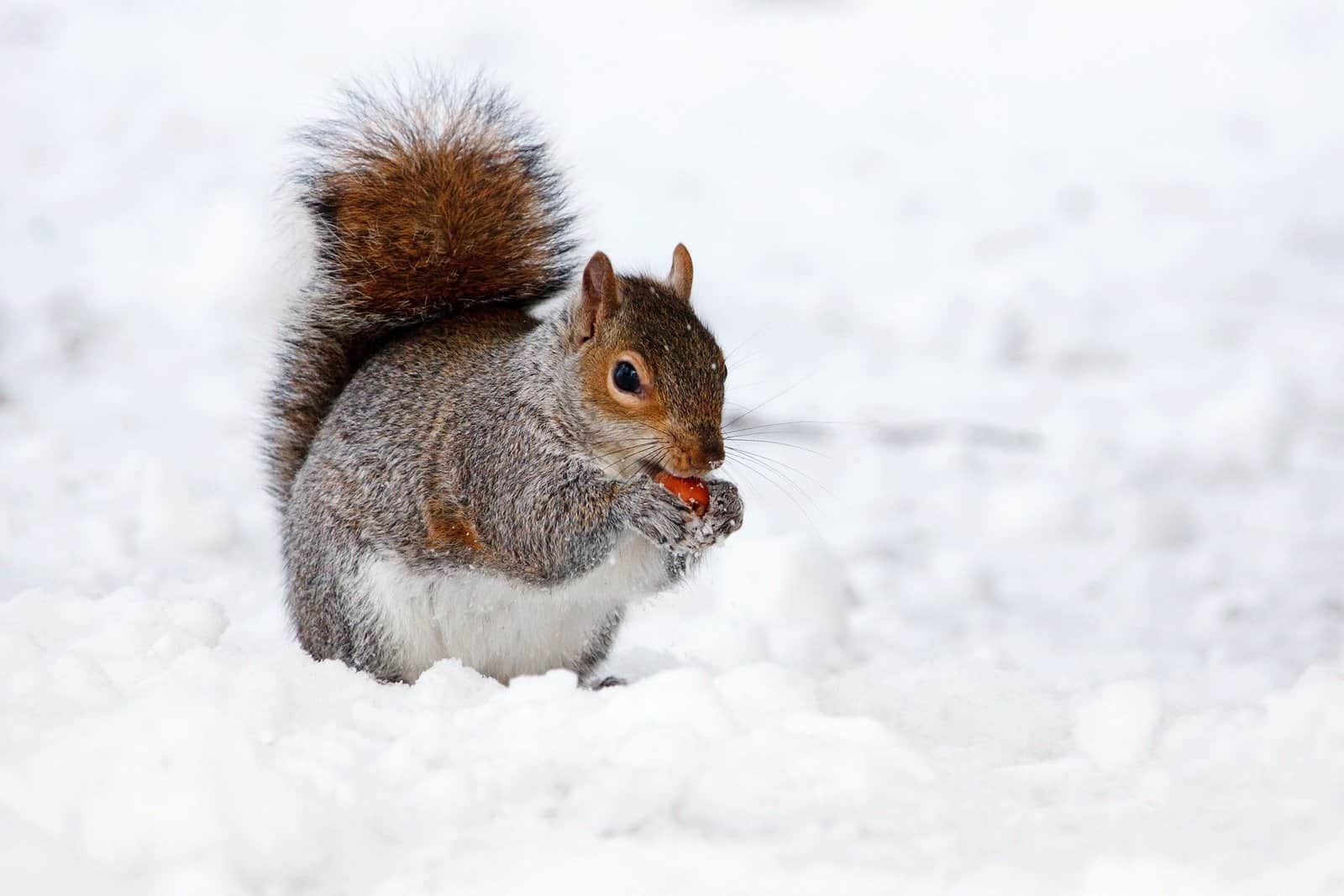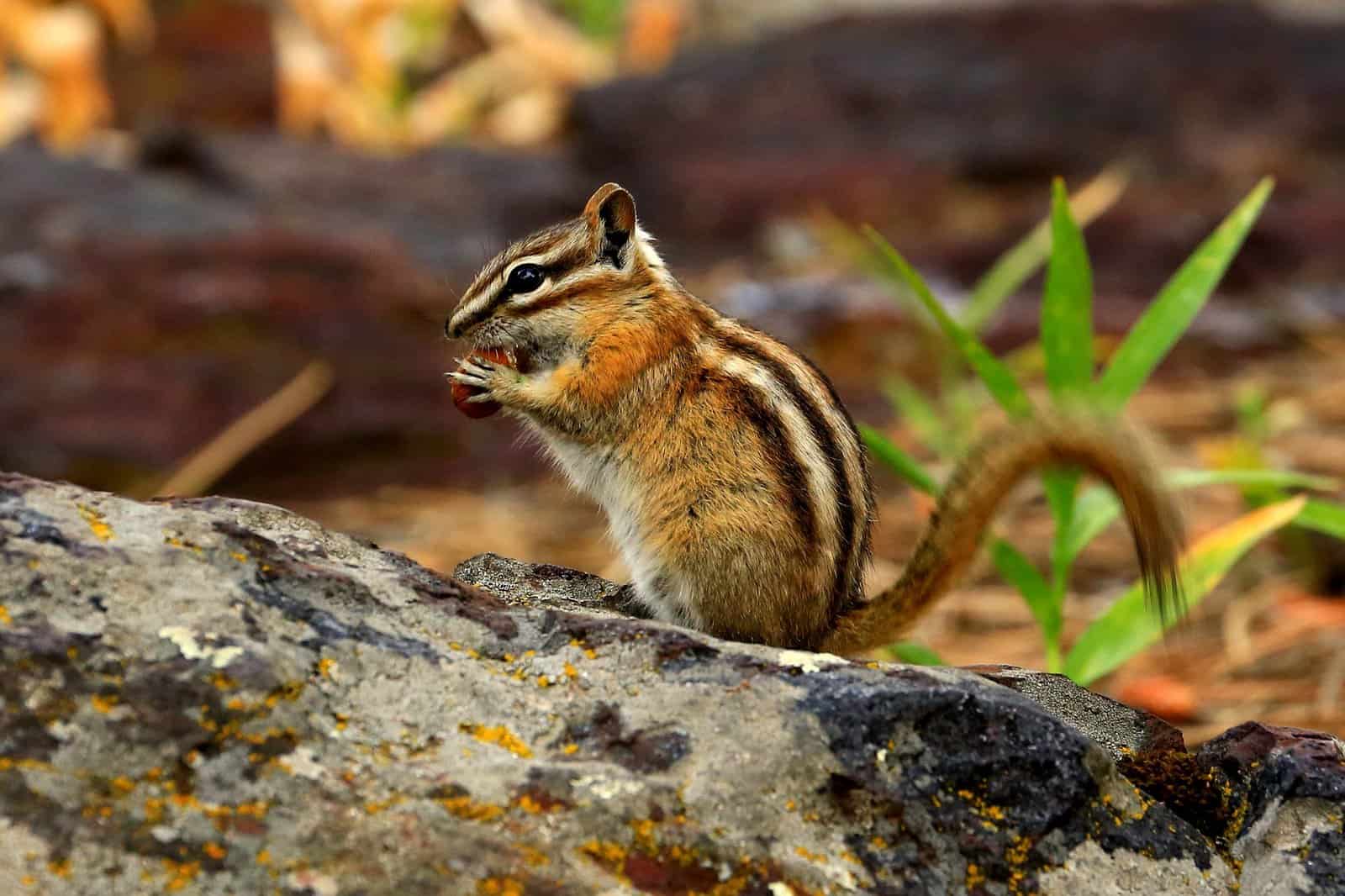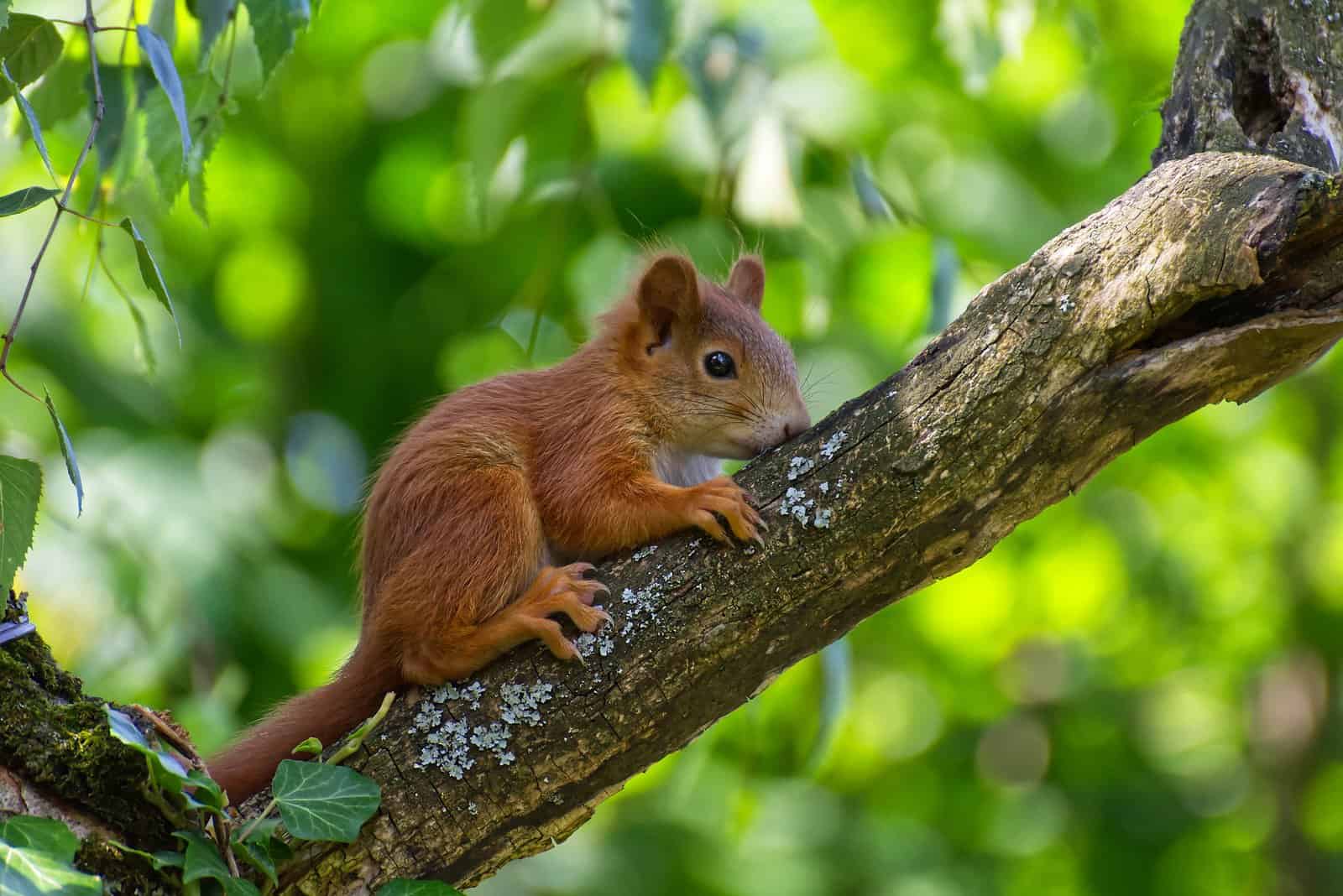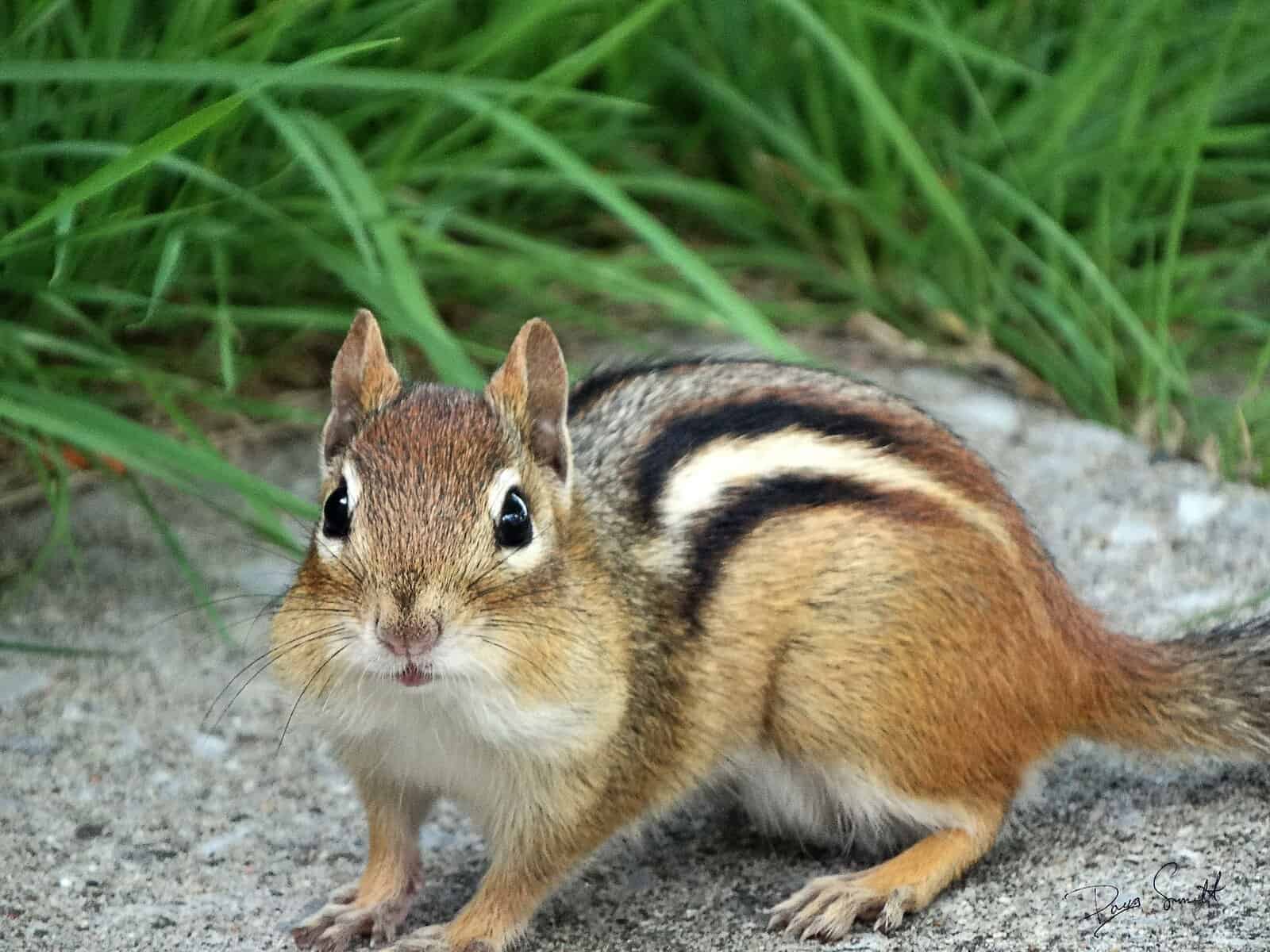
Squirrels and Chipmunks: 3 Amazing Similarities and Differences Between the Two Cute Rodents
One thing our planet Earth is characterised by is biodiversity. Biodiversity refers to the different forms of life found everywhere, whether existent or extinct. Scientists have estimated there are around 8.7 million existent species on Earth. However, only 2.3 million of them are known to us. The rest, around 6.4 million species, are still a complete mystery.
Those living species are further classified into seven different levels known as taxonomic ranks. You can think of these levels as a hierarchy. Every rank contains a set of species that share certain traits. These taxonomic ranks, from specific to general, are species, genus, family, order, class, phylum, and kingdom.
And since there are only seven ranks while the number of species is several millions, it is very normal to find huge similarities between the different species. For instance, the cat family includes small cats such as domestic ones and big cats such as lions, tigers, and cheetahs. Each one of these is an independent species. Yet, there are many obvious similarities between them.
Similarly, squirrels and chipmunks belong to the same family called Sciuridae and the same order Rodentia. Every one of them is a totally different species. However, they look too similar. So how do we tell them apart? What are the similarities and differences between squirrels and chipmunks? And why is each one of them an independent species?
Well, this is what we are discussing in today’s lesson. So let’s hop into it.
Squirrels

Squirrels are small/medium-sized rodents native to both North and South Americas, Europe, Asia, and Africa. They are not originally found in Australia; however, many of their species have been introduced to the continent. Squirrels usually live in trees and on or under the ground.
There are more than 200 squirrel species currently living on Earth. These are further divided into three aptly named groups: tree squirrels, ground squirrels, and flying squirrels. The latter cannot really fly as well as birds but they leap from one tree branch to another and descend in a parachuting manner.
Ground squirrels dig burrows in the ground. This is where they sleep at night and store their food for winter. On the other hand, tree squirrels and flying squirrels build nests and live in tree holes.
Like tigers, lions, and kangaroos, there are white squirrels too. White squirrels are the product of a rare genetic mutation called leucism. Such a condition causes the melanin levels to be very low in the body cells. And since melanin is the pigmentation that gives the skin, hair, and eye iris the dark colour, leucistic squirrels turn out white.
There are two conditions that cause the living being to turn white. The first is leucism in which the melanin levels get too low. If there is no melanin at all in the cells, it is called albinism.
Chipmunks

One difference between squirrels and chipmunks is their species.
There are 25 chipmunk species currently living on our planet. Only one of them, called the Siberian chipmunk, is found, yes, in Siberia, Asia. The remaining 24 chipmunk species are found in North America.
That said, there are a number of similarities between the two rodents, for example, where they both live.
Like squirrels, chipmunks live in trees and underground, digging complete tunnel systems with burrows and chambers or building nests using leaves, twigs, and tree bark. The chipmunk habitat is quite varied too, from high-mountain forests to deserts.
In addition, chipmunks also experience leucism which produces white pups.
Appearance
Both rodents look annoyingly similar. However, there are some key differences in their physical appearance. These include
- Size
- Stripes
- Tail
- Cheeks
So let’s demonstrate them in a little more detail.
Squirrels

Despite being variant in size, almost all squirrels share a few physical traits.
For instance, their bodies are covered with soft differently-coloured fur coats. Squirrels are also highly characterised by their quite long and very bushy swirled tails. Besides making the squirrel look so cutely attractive, this bushy tail also helps the rodent stay cool when the weather is hot. It keeps the rain off its body and balances it out when jumping.
That said, squirrels range dramatically in size. The smallest squirrel species is called the African pygmy squirrel. In fact, it looks more like a rat than a squirrel. It is 12.7 cm long at maximum and usually weighs around 16.5 g. That African pygmy squirrel is only found in the forests of Central Africa.
On the other hand, the largest living squirrel is the Bhutan giant flying squirrel. It is 1.27 m long and weighs up to 8 kg.
Additionally, squirrels have four always-growing front teeth and big eyes. Those big eyes enable a perfect sense of vision. Squirrels also have sharp claws that help them climb up and down trees. Besides, these perfect claws enable squirrels to dig holes and burrow very fast. Every foot has four to five toes, with a small underdeveloped thumb.
Squirrels live between five and 10 years in the wild. But if they are taken care of by humans, like when kept in zoos and conserves, they can live up to 20 years.
Male squirrels are called boars, females are sows, and babies are kits.
Chipmunks

On top of the differences between squirrels and chipmunks are the stripes.
Chipmunks have five dark brown or black stripes running through their heads, backs, and even tails. In addition, they are also born with two stripes around their eyes. That said, squirrels do not have any stripes, not even a teeny-tiny one.
The chipmunk’s body is covered with a fluffy fur coat that is usually in variant brown colours while its belly and underparts are off-white. The chipmunk also has a relatively long tail. Yet, it is not as bushy as that of a squirrel.
Furthermore, chipmunks are uniquely characterised by their chubby cheeks called cheek pouches. They use them to store multiple nuts at the same time. This makes them look even cuter.
Another difference is the size. Chipmunks are way smaller than squirrels. The smallest chipmunk species, called the least chipmunk, has a maximum body length of only 20 cm and weighs between 31 and 51 g—that is even lighter than a pack of chewing gum. Speaking of average size, chipmunks are just a little taller than a teacup.
On the other hand, the largest chipmunk species is called the eastern chipmunk. It weighs up to 125 g and has a maximum body length of 28 cm.
Comparing the two rodents, the largest squirrel is 64 times heavier than the largest chipmunk!
A male chipmunk is called a buck, a female is a doe, and a baby is called a pup.
Chipmunks die way younger than squirrels. They live for two to three years on average. In captivity, chipmunks can live up to eight years.
Mating
This is another area where both squirrels and chipmunks show some differences, especially regarding:
- Mating frequency
- Pregnancy duration
- Nests vs burrows
Here are some more details.
Squirrels
Squirrels are able to breed at the age of one year. They mate once or twice a year. A female squirrel stays pregnant for three and up to six weeks. Usually, the pregnancy period depends on the squirrel species. Small-sized squirrels have shorter pregnancies and vice versa.
Then, the female gives birth to three to eight baby squirrels at a time. Birth typically takes place either in February and March or in June and July.
Before giving birth, mothers usually build nests in trees. They make sure they are warm, safe, and away from predators.
Kits are born almost totally helpless. They have no fur, no teeth, and they are blind too. Raising and looking after kits is the mother’s responsibility in which squirrel fathers do not usually participate. A mother nurses her kits for up to four hours a day, for four to six weeks after birth. She grooms them, keeps them warm, and protects them from predators.
At the age of six weeks, the mother gradually introduces her kits to solid food. This usually continues for 10 weeks. After that, baby squirrels are old enough to feed themselves. At this point, they are called juveniles.
However, many juveniles die before they turn one year old. The most common reason for their death is the nest falling off the trees with the mother not coming to the rescue.
When such a thing happens, usually caregivers rescue the juveniles and take care of them until they are strong enough to go back to the wild. These people are referred to as professional wildlife rehabilitators.
Chipmunks
The chipmunk’s mating habits differ from one species to another. Some species like the eastern chipmunk, which is also the largest, breed twice a year usually in early spring and then again in early summer. Other species like the western chipmunk breed only once every year.
A female chipmunk stays pregnant for 28 to 35 days, based on her species. A mother usually digs a burrow for her upcoming babies. She gives birth to two and up to eight pups per litter.
Like the squirrel, a chipmunk mother is the one responsible for caring for the young. She nurses them in the burrow, which they do not leave until they are a month and a half old. Shortly after going out to the world, the pups will begin looking for food themselves and storing it for the upcoming winter.
Feeding
Speaking of food, both squirrels and chipmunks seem to have the same diet. They can also adapt easily to whatever food is available.
Since squirrels are found all over the world, they do live in almost all kinds of habitats, from the rainforests abundant in freshwater to the dry deserts. That makes the squirrel diet quite various. That is the same case with chipmunks whose habitat varies a lot throughout North America.
One common thing about squirrels and chipmunks is that they eat nuts, which is correct. They eat almost all kinds of nuts but their favourites are walnuts (mine too), hazelnuts, almonds, and pecans.
But in general, squirrels and chipmunks are vegetarians. They eat fungi such as mushrooms, fruits, seeds, and eggs. Squirrels also eat insects or meat if they happen to be available. On the other hand, chipmunks may eat newly-hatched birds, frogs, and bird eggs.
Squirrels and chipmunks themselves are food to other birds and animals. On top of them are hawks and eagles. Due to their relatively small size, squirrels and chipmunks are easily spotted by a flying hawk. Red foxes, weasels, dogs, wild, and even domestic cats do prey on these two rodents too.
Behaviour
Both squirrels and chipmunks follow an interestingly distinct behaviour to survive the winter cold. They either hibernate or rely on food storage.
Hibernation is a state of sleep many animals go through to avoid harsh seasons. Some animals such as the desert tortoise and the gastropod hibernate during summer. On the other hand, squirrels and chipmunks hibernate during winter.
Whether the rodent hibernates or not mainly depends on the species. Some species of squirrels and chipmunks prefer to sleep in their burrows for three months. To survive such a long period, they eat a lot during summer and autumn to build up extra body fat. This increased layer of fat helps keep them warm during winter.
Other species do not hibernate. So to feed during winter, they collect nuts and store them in their burrows underground. During the winter season, both squirrels and chipmunks stay in their burrows and enjoy the food they collected during autumn until the weather is warm again to go out.
This interesting video shows how squirrels are so dedicated to securing their winter fuel. A man found out his car had been a storage where a hardworking squirrel had hidden over 200 walnuts!
Squirrels are able to locate their burrows easily thanks to their perfect sense of smell. They can even locate nuts buried under a 30-cm sheet of ice. That also means, stored nuts are prone to robbery!
When winter is harsh, some squirrels may steal some of the food storage of other squirrels. Yet, squirrels always try to protect their food by deceiving their thieves. For instance, they take a nut, dig a hole, and pretend as if they bury it while in fact, they do not. This is to give the thieves a fake clue about their food storage location. This way, they help their own stored food stay safe.
When either squirrels or chipmunks feel threatened or when they are about to be attacked by a predator, they run. In fact, both rodents are good runners. One squirrel species called the eastern grey squirrel reaches a running speed of 32 km/h. Chipmunks can also run as fast as 33 km/h.
Interestingly, squirrels and chipmunks do not always run straight away. In many cases, depending on how big the danger is, they zigzag so as to wear down their predator.
All in all
As we have demonstrated, there are many similarities and differences between squirrels and chipmunks. So to recap the important details, we have listed the main differences to help you tell the two rodents apart.
| Squirrel | Chipmunk | |
| Species | 200 | 25 |
| Habitat | Every continent except Australia and Antarctica | North America and Siberia |
| Life expectancy | 5-10 years | 2-3 years |
| Largest species size | 1.27 m, 8 kg. | 28 cm, 125 g |
| Stripes | no | yes |
| Cheek pouch | no | yes |
| Super busy tail | yes | no |
| Pregnancy | 3-6 weeks | 4 weeks |
If you enjoyed learning about this facinating animal why not check out more fantastic facts about other animals: Koalas, Ostriches, Land Animals, Sharks, Raccoons, Moon and Sun Bears, Rats, Sheep, Chickens, Cats, Pandas, Monkeys and Whales.
Why not subscribe for as little as £1.99 per month to access over 1000 fun educational videos!


Leave a Reply